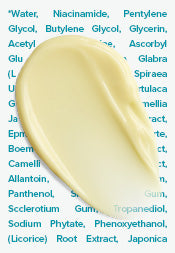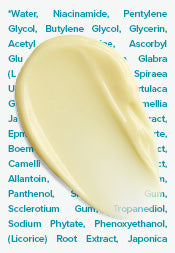How to Minimise the Looks of Post-Acne Scars & Marks
When a swollen acne blemish or pimple breakout finally goes away, it’s all too often replaced by a visual reminder: a red or brown mark. Or even worse, an acne scar. Feeling frustrated is an understatement when that happens!
We want to assure you that this lingering reminder of a blemish can absolutely be alleviated quickly (or even averted before it happens) with some simple, but vitally important, skincare DOs and DON’Ts. Let’s take a closer look at how to get rid of acne scars and marks.
Why scrubs and at-home remedies don’t get rid of post-acne scars
As many of us know from experience, most post-acne marks products claiming to help don’t work as promised. But, if you know which ingredients to look for and what to avoid, you can minimise their appearance surprisingly quickly.
At-home remedies that promise to reduce post-acne scars and marks, such as rubbing lemon juice or other citrus fruits on your face absolutely do not work. They cannot exfoliate skin properly and their acidic juices are potent skin sensitisers that can cause post-acne marks to last longer “and intensify in appearance,” according to Board-Certified Dermatologist Dr. Corey L. Hartman. Not what you’re after, right?
Abrasive scrubs are also a waste of time because post-acne marks and breakouts can’t be scrubbed away. If anything, using scrubs over acne can further inflame your skin, possibly causing micro-tears which will make leftover marks harder to get rid of and delay bringing your skin back to normal. Dr. Hartman notes, “your goal should be reducing the irritation and not adding to it”.
How to minimise post-acne marks
So, what really works? As always, we turn to published scientific studies to find out. The following research-backed methods are proven to improve the appearance of post-acne scars and marks for any skin tone, age, or ethnicity.
Research shows that the trio of a non-irritating cleanser, salicylic acid (BHA) exfoliant, and anti-acne product containing benzoyl peroxide can dramatically improve and transform a blemish-prone complexion and minimise post-acne marks. Dr. Hartman notes that, “the best way to treat an acne mark is to prevent it from developing or minimising it by controlling the irritation that leads to the mark”.
At Paula’s Choice Skincare, we’re proud of our 3-step CLEAR Regular Strength Essential Kit for mild to moderate breakouts, or our Extra Strength Starter Kit for more stubborn acne. These are the starting points for you to get the complexion you want.
The superhero of these kits is the Regular/Extra Strength Exfoliating Solution 2% BHA, which exfoliates the skin’s surface to make marks fade more quickly and has a natural soothing effect that minimises the appearance of redness— double the benefit for post-acne marks!
Wear sunscreen every day, without exception. Unprotected exposure to UV light steadily damages skin, which means the red areas from acne will stick around longer. Protecting your skin from UV exposure every day is critical to diminishing the look of post-acne marks. Wearing sunscreen also keeps your skin healthy-looking and when used as directed with other sun protection measures, it decreases the risk of skin cancer and early skin ageing caused by the sun—a win-win! Dr. Hartman says, “If you’re treating discolouration and marks, but not wearing sunscreen every day, you are getting in your own way and stunting your progress”.
Use additional skincare products loaded with antioxidants, especially vitamin C for post-acne marks and skin-restoring ingredients like retinol for post-acne marks. These types of beneficial ingredients help safeguard your skin from environmental assault while also revitalising its surface and minimising red marks. Those with medium to dark skin tones may find using the CLINICAL Discoloration Repair Serum, a product with 3% tranexamic acid, provides further help since post-acne marks for darker skin tones tend to involve hyperpigmentation.
Many will find that a potent dose of C15 Super Booster that contains 25% vitamin C (ascorbic acid) works with their anti-acne products to brighten an uneven, bumpy skin tone and help the skin feel smoother. This easy-to-use formula can be dabbed on areas of concern at the end of your nightly skincare routine.
Don’t pick at blemishes. We know it’s difficult to keep your hands off but picking at pimples on your face can worsen post-acne marks and leave a scar! Still, sometimes you just have to pop a zit, or it will stay around longer and look terrible. If that’s the case, follow our play-by-play instructions on how to pop a pimple on your face safely and gently.
Tips for dealing with post-acne marks
Featuring Paula's Choice Skincare's Director of Skincare Educational Programs, Deborah Kilgore
Learn more about the different types of acne and solutions here.
References for this information:
Cochrane Database of Systematic Skin Reviews, November 2014, issue 11
Journal of Dermatology, October2012, issue 5, pages 433-438
Clinical Cosmetic and Investigational Dermatology, November 2010, issue 3, pages 135-142
Expert Opinion of Pharmacotherapy, October 2009, issue 15, pages 2555-2562
American Journal of Clinical Dermatology, December 2012, issue 6, pages 357-364












